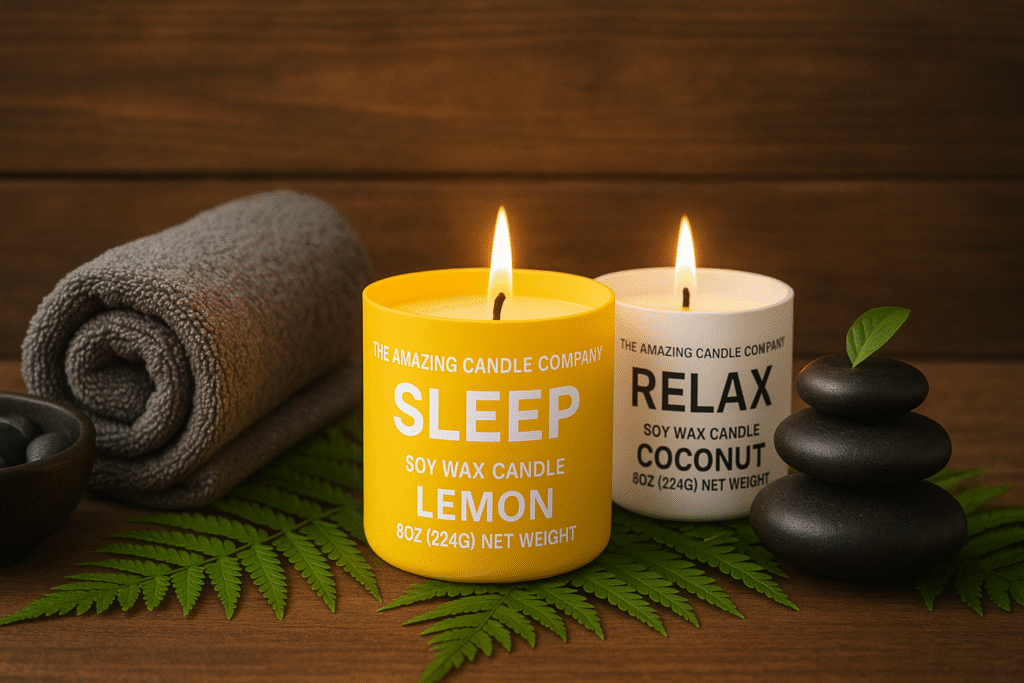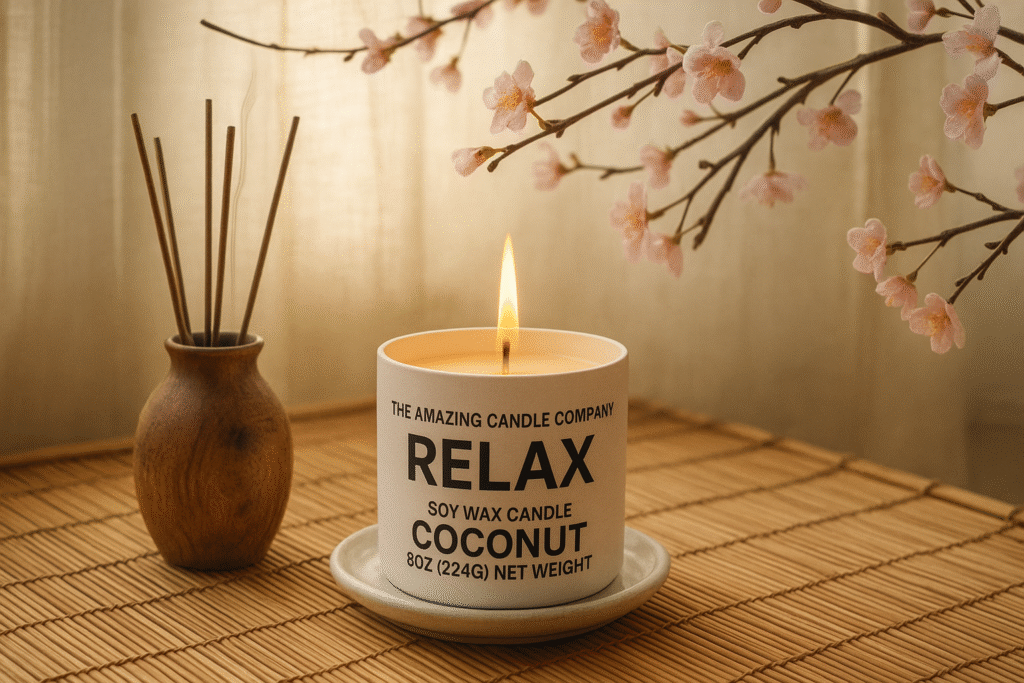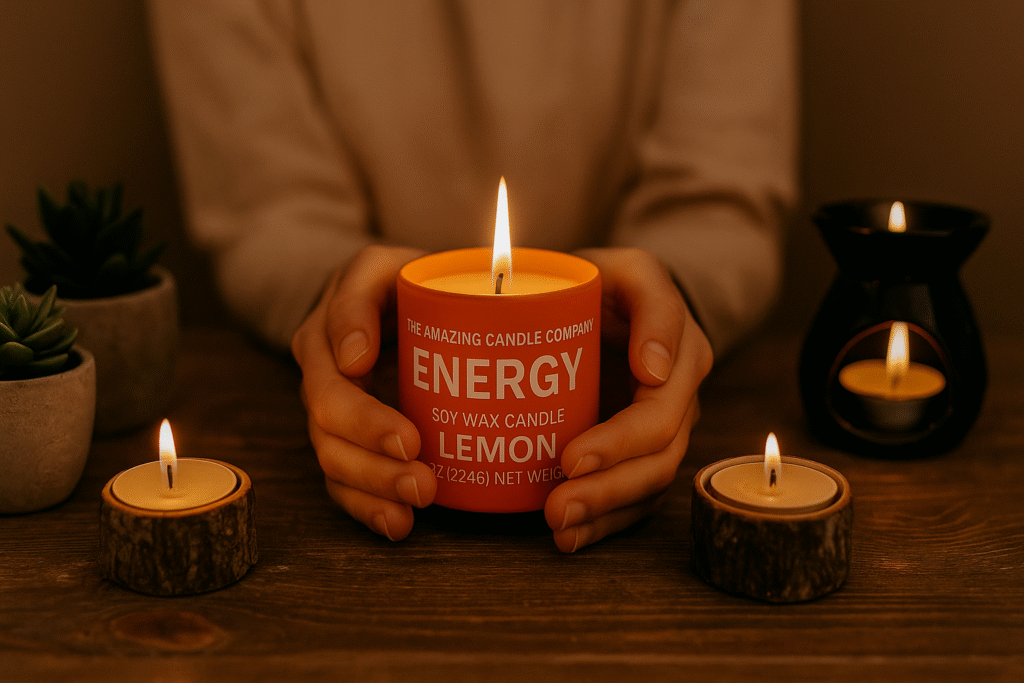Introduction — lighting the way to mindful living
There’s a subtle magic in the slow melt of wax, the first curl of warm light, the hush that follows a single match strike. For many of us, candlelight is more than decoration — it is a doorway. In a world that races louder every day, a carefully chosen candle can be an anchor: a soulful candle that invites presence, calms the nervous system, and transforms a hurried evening into a mindful ritual. In this guide we’ll explore how candles support meditation and mindfulness, which scents help with focus or relaxation, and how to choose the perfect stress relief candle for your practice. Whether you’re a seasoned meditator or someone curious about beginning a mindful-living routine, this post will help you pick the right comfort candle and make the most of it.
Why candles help with meditation and mindfulness
Candlelight affects more than the eye. It influences mood, circadian rhythm, and attention. Soft flicker reduces overstimulation caused by screens and harsh overhead lights; the steady, low-frequency light of a candle helps the brain downshift from sympathetic ‘go’ mode toward parasympathetic ‘rest and restore’ mode. Scent adds another layer: olfactory cues connect directly to the limbic system — the part of the brain that handles emotion, memory, and stress responses. An herbal relief candle with lavender and chamomile can create an immediate signal to slow down, while resinous notes like frankincense can deepen focus during meditation.
Psychologically, the ritual of lighting a candle creates intention. A small habitual action — striking a match, naming your intention, watching the flame — gives your nervous system a predictable anchor. Over time, your body learns that the candle signals practice, and the same simple light can reliably cue calm and clarity.
How to choose a candle for meditation: what matters most

Not all candles are created equal. When selecting a candle for mindful living, consider these factors:
1. Wax type. Natural waxes like soy, coconut, or beeswax burn cleaner and slower than paraffin. Beeswax candles have a faint natural scent and are often used for purifying vibes; soy and coconut provide a neutral base that lets essential oils shine.
2. Wick and burn quality. Look for cotton or wooden wicks that burn with a steady flame and minimal soot. A properly sized wick prevents tunneling and creates an even melt pool — essential for aroma release and safety.
3. Fragrance source. For meditation, essential oil blends are preferable to synthetic fragrance oils. Essential oils deliver nuanced aromas and the associated plant benefits. If you’re sensitive, choose unscented or very lightly scented candles.
4. Scent profile and intention. Match the fragrance to your goal. If you want anxiety relief, reach for lavender, bergamot, or chamomile. For focus, try rosemary, peppermint, or frankincense. For grounding, cedarwood, vetiver, or patchouli work well.
5. Size and burn time. Longer meditations require longer burn times. Travel-size tins are perfect for short morning rituals; larger jars give extended support for an evening mindfulness routine.
6. Packaging and ethics. If conscious consumption matters to you, look for cruelty-free, sustainably sourced ingredients, recyclable packaging, and small-batch artisans.
Top scent families for meditation and mindful living
Below are scent families and how they can support specific intentions. Use them as a cheat-sheet when selecting a comfort candle or stress relief candle.
Herbal & Floral — gentle calming and anxiety relief
- Lavender: classic for anxiety relief and sleep. A go-to for evening practice.
- Chamomile: soft, honeyed notes that soothe frayed nerves.
- Rose & neroli: heart-opening scents that support compassion and the ‘peace and love candle’ vibe.
Resins & Woods — focus, grounding, and depth
- Frankincense: bright, resinous, and clarifying — excellent for deep, centered attention.
- Sandalwood: warm and grounding, often used in Buddhist and Hindu traditions.
- Cedarwood & vetiver: earthy anchors that help the mind settle.
Citrus & Bright Notes — uplift and clarity
- Bergamot & lemon: energizing but not jittery; ideal for morning mindful routines.
- Grapefruit & orange: clear the mental fog and lift mood.
Herbal-Green — alert, clear, and present
- Rosemary: traditionally used to sharpen memory and focus.
- Eucalyptus & mint: open the chest and ease breathing exercises in pranayama.
Complex blends — soulful candles that invite depth
- Combinations that mix resinous frankincense with a soft floral heart and a citrus top can guide you from wakeful clarity to soft reflection. These blends often feel like a ‘soulful candle’ that carries ceremony.
Rituals: how to use a candle in your meditation practice
A candle can be a tool, an altar piece, and a ritual prompt. Here are simple, repeatable rituals that turn lighting into practice:
1. Set an intention. Before lighting, take a breath and state your intention silently or aloud — e.g., “For presence,” or “To release anxiety.” This transforms the act into a mindful anchor.
2. Use breath with the flame. Watch the flame for 8–10 breaths. Let your inhale align with the flame’s lift and your exhale follow the flame’s soft shimmer. This is a gentle moving meditation.
3. Focused gazing (Trataka). In some meditation traditions, gentle, unwavering gaze at the flame (trataka) trains concentration. Sit comfortably, keep your eyes soft, and let the flame steady your attention. If your eyes feel strained, close them and visualize the afterimage.
4. Short, repeatable sessions. Keep small jars for quick 10-15 minute pauses mid-workday. Use a larger, long-burn candle for evening wind-down rituals.
5. Combine with journaling. After a candle meditation, note one line in a journal — a feeling, an insight, or a release. This reinforces mindful living habits.

The best candles for specific goals (examples and suggestions)
For anxiety relief: Look for an “anxiety relief candle” with lavender, bergamot, and a touch of vanilla. Vanilla softens citrus top notes and comforts without sedation.
For sleep & relaxation: A “relaxation candle” should include chamomile, lavender, and musk or amber for a longer, soothing finish.
For focus and study: A clear, crisp blend of rosemary, frankincense, and a clean citrus note helps sustain attention without overstimulation.
For heart-opening or relationships: A “peace and love candle” with rose, neroli, and a soft sandalwood base invites tenderness and presence.
For grounding during heavy emotion: A “comfort candle” with vetiver, cedarwood, and smoky oud can feel like a warm, protective blanket.
Mindful safety and candle-care tips
Candle safety is an extension of mindful living — it keeps your practice peaceful, not perilous.
- Always trim the wick to 1/4 inch before lighting. This reduces soot and creates a steady flame.
- Let the candle burn until the first full melt pool forms to avoid tunneling. This may take at least 1 hour for larger jars.
- Never leave a burning candle unattended. Even a short meditation should be paired with awareness of the flame.
- Place candles on a heat-resistant surface and away from drafts, curtains, or children and pets.
- Extinguish mindfully: use a candle snuffer or gently press the wick into the molten wax with a non-flammable tool and lift back up (this method can preserve the wick — but be careful with hot wax).
DIY candle ideas for deeper practice
If you enjoy hands-on rituals, making your own candles can be an act of devotion and intention. Homemade candles allow you to choose wax, wick, and essential oils that align with your needs. Here’s a simple ritualized DIY idea:
Simple intention candle
- Ingredients: soy wax flakes, cotton wick, essential oils (lavender + frankincense), a small glass jar.
- Method: Melt wax gently, remove from heat, add 6–8 drops of essential oil per 100g of wax, pour into jar with wick centered, set and trim.
- Add intention: before the wax cools, press a small symbolic item (a tiny dried flower or a written affirmation folded and wrapped in parchment) onto the outer base for later reflection.
Making candles slowly — melting, stirring, pouring — can itself be a form of active meditation.
Sustainability and ethical choices
Mindful living ideally extends to consumption. To keep your candle practice aligned with environmental and ethical values:
- Choose candles made from renewable waxes (soy, coconut, beeswax) rather than paraffin.
- Prefer essential oil-only fragrances or responsibly sourced fragrance oils.
- Support small-batch artisans who use recyclable packaging and transparent ingredient lists.
- Reuse jars as planters, vases, or storage once the candle is finished — the repurposing continues the mindful circle.
Pairing candles with different meditation styles
- Mindfulness meditation: Use light, unscented or very lightly scented candles. The flame becomes an anchor for present-moment awareness.
- Loving-kindness (Metta): Choose a rose or neroli-forward peace and love candle to open the heart.
- Breathwork / pranayama: Eucalyptus or mint candles help keep the breath clear; avoid overpowering scents during intense breathwork.
- Guided visualizations: Choose a soulful candle with layered notes that match the visualization (e.g., oceanic salt + yuzu for a seaside visualization).
- Movement meditation (yoga, tai chi): Bright citrus or herbal blends can enliven and support gentle flow.
Troubleshooting common candle issues
Too much soot: Trim the wick and avoid drafts. A wick that’s too long or flickering from a draft produces more soot.
Candle tunnels (hollow sides): Let the first burn last until the whole top melts. If tunneling happens, try a foil hack (wrap the jar sides in aluminum foil with a small opening at the top to retain heat during a burn) or use a higher-quality wax blend.
Scent too weak: Make sure the candle was made with essential oils at appropriate concentration. For low-scent spaces, choose a smaller room or use multiple small candles placed safely.
Scent too strong or triggering: Extinguish and ventilate the room. For future practice, select milder scents or unscented options.

FAQs — quick answers
Q: Can candles actually help anxiety?
A: Yes — through a combination of ritual, reduced visual stimulation, and calming aromatherapy. They are an effective adjunct to breathing practices and therapy but not a replacement for professional care when needed.
Q: Are beeswax candles better for meditation?
A: Beeswax burns clean and emits a subtle natural scent; many people enjoy its steady glow for ceremonial practice. Choose what resonates with you.
Q: How long should I burn a candle during meditation?
A: Short sessions (10–30 minutes) are common. If you plan longer sessions, choose candles with longer burn times and never leave them unattended.
Q: What if I’m sensitive to fragrance?
A: Use unscented or very lightly scented candles; beeswax has a naturally faint aroma that’s less likely to trigger sensitivities.
Closing thoughts — cultivate small rituals, big returns
Mindful living doesn’t require grand gestures. A match struck with intention, a few minutes of soft gaze, and the inhale of a herbal relief candle can create a steady, reliable doorway into presence. Over time, these small acts accumulate: evenings become calmer, mornings more centered, and stressors less commanding.
When choosing candles for meditation and mindfulness, favor quality — a well-crafted soulful candle will support practice more reliably than a cheap, overpowering mass-market jar. Match scent to intention, practice safety, and treat candle time as sacred: short, repeatable rituals that remind you to come home to yourself.

